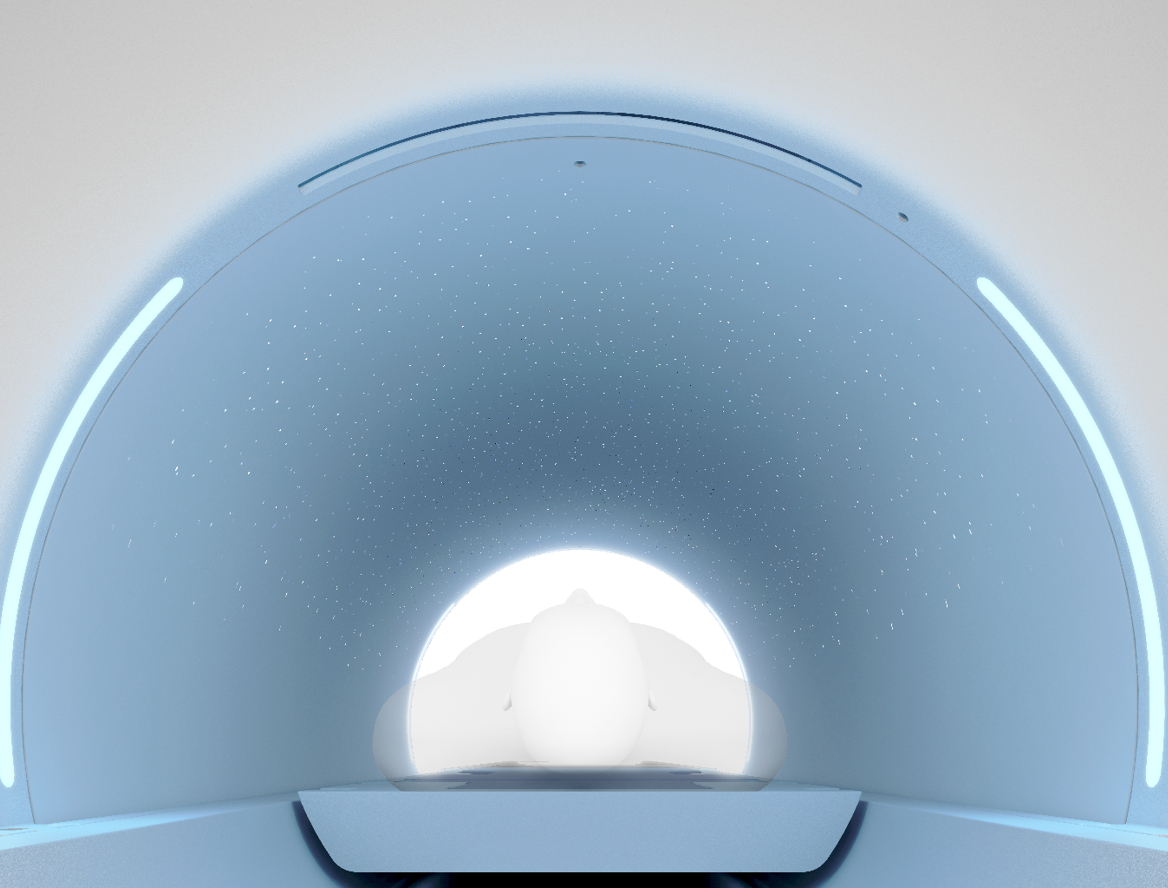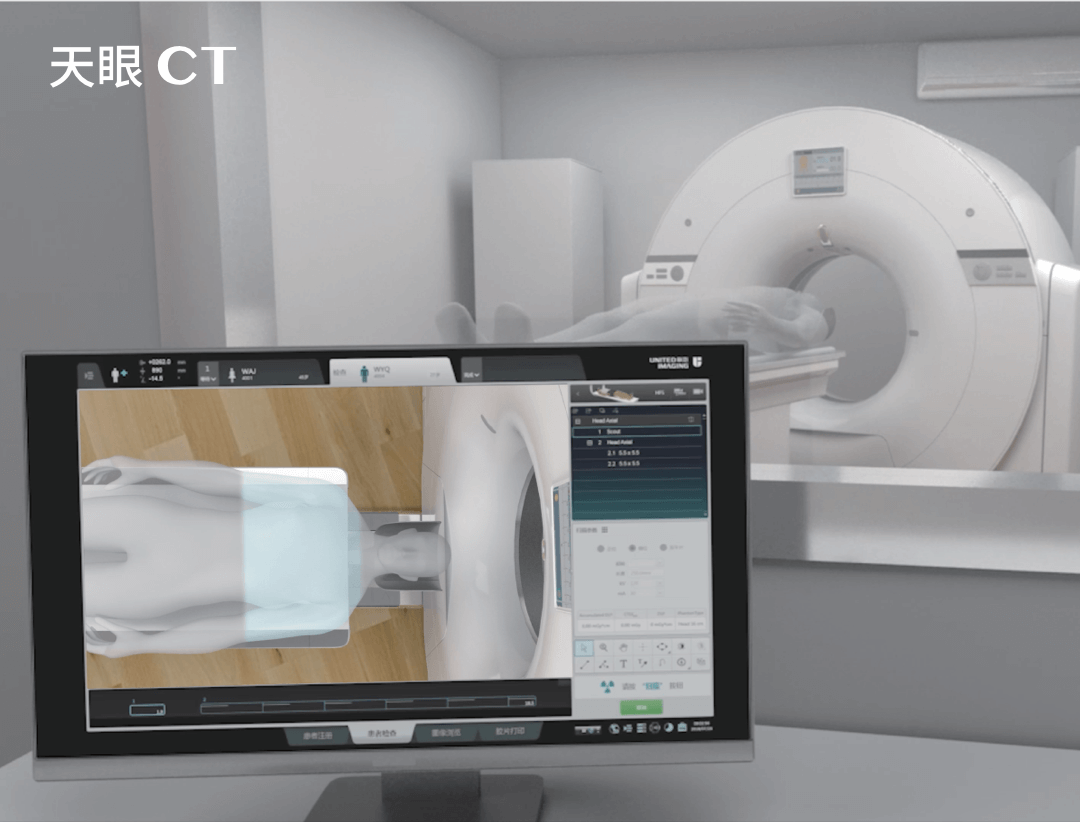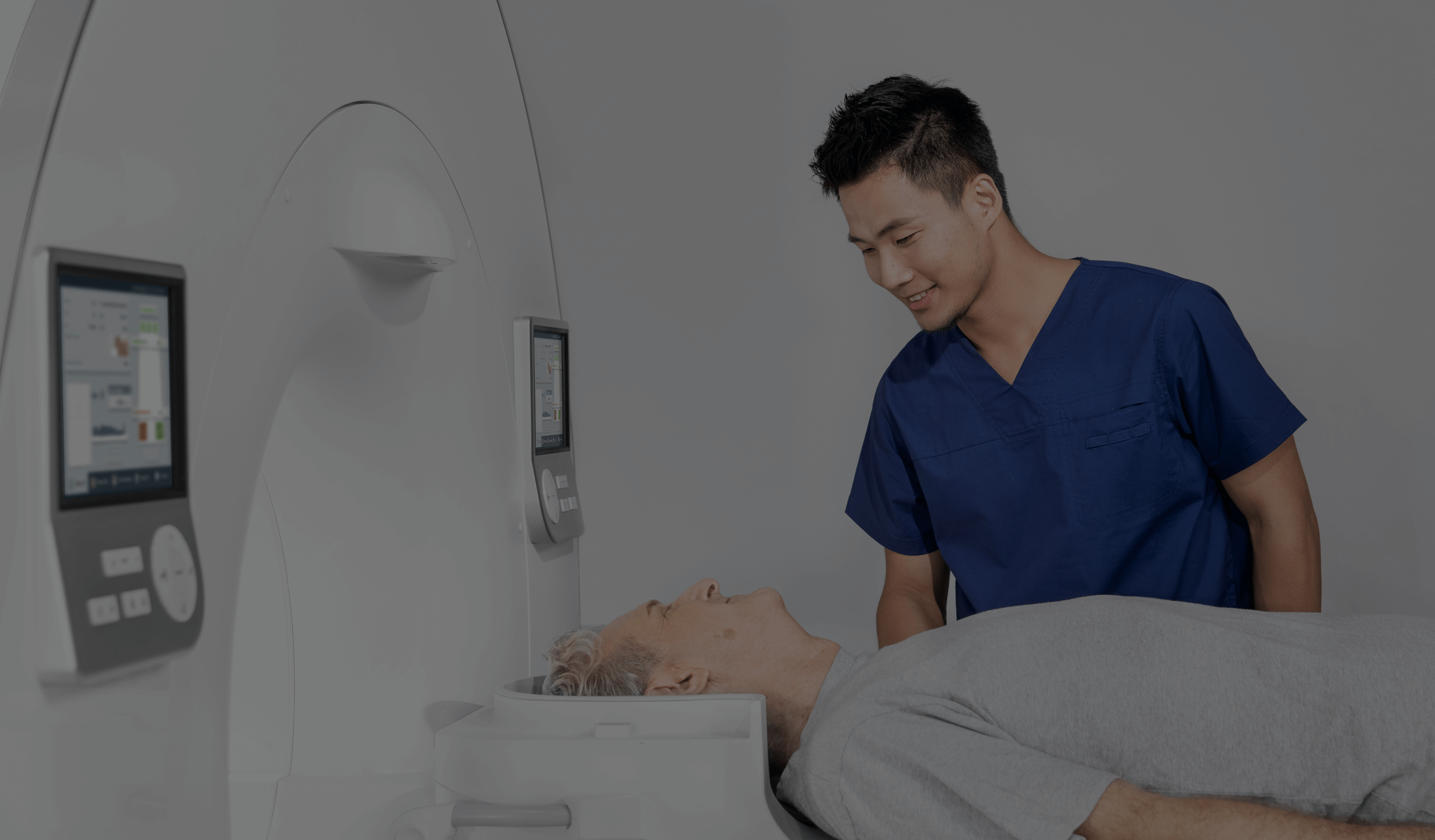Magnetisation transfer imaging
Magnetisation transfer imaging (MTI) is among the latest tools in the field of medical imaging. Its primary advantage is that it allows extremely precise assessment of brain structures and functions. This article discusses, among other things, the exact nature and application of this type of diagnostics.
What is magnetisation transfer?
Magnetisation transfer is a phenomenon involving the exchange of energy between tissue areas with different magnetisation densities in the presence of a magnetic field. Magnetic resonance imaging (MRI) leverages this phenomenon to produce high-contrast images that allow evaluation of various areas of the brain, including the cerebral cortex, central nervous system cavities and frontal lobes. Thus, key concepts underlying magnetisation transfer include:
- transfer – the process whereby magnetic energy is exchanged between areas of tissue.
- magnetisation – a phenomenon involving the magnetic moments of atoms being reoriented in the direction of an external magnetic field.
- magnetic resonance imaging (MRI) – an advanced imaging technique that uses magnetic field to create precise three-dimensional images of the body’s internal structures.
Principle of magnetisation transfer
Magnetisation transfer imaging (MTI) is a magnetic resonance technique that generates tissue contrast by exploiting the exchange of magnetisation occurring between two groups of protons. Traditional magnetic resonance imaging relies primarily on signal from free water protons. Protons bound to macromolecules are not directly involved in MR image generation but can be made visible using the MTI technique. What does this look like in practice?
For this purpose, special RF pulses are used to saturate bound protons, and then the exchange effect with free water protons is observed. The result is a reduction in the signal intensity of the image. The magnetisation transfer ratio (MTR) allows quantitative assessment of this process and is considered an indicator of axonal integrity, providing information about the structural integrity of the brain’s white matter.
Magnetisation transfer application – a new method for evaluating brain tissue
As a result of the latest structural and functional studies, magnetisation transfer imaging has become an extremely important brain tissue evaluation tool. It produces high-resolution images that reveal abnormalities in the cerebral structure, such as changes in tissue density and cortex layer abnormalities, including those related to the volumes of certain brain structures or brain matter volume.
Magnetisation transfer imaging in MRI
While MRI is among the most advanced tools for brain imaging, magnetisation transfer imaging offers several unique advantages. By using a specific magnetic signal, MTI enables higher contrast images to be generated, which is especially important in examinations that require precise brain structure evaluation.
Magnetisation transfer imaging in schizophrenia
One area where MTI has found application is the evaluation of brain tissue in schizophrenia. Studies have demonstrated that schizophrenia sufferers exhibit changes in brain structure, especially in the frontal and temporal lobes. Using magnetisation transfer imaging, scientists today are able to more accurately assess these changes and understand their impact on brain function. Thus, magnetisation transfer imaging is now a key tool in diagnosing schizophrenia.
Modern imaging techniques
In addition to MTI, there are many other modern imaging techniques, such as magnetic resonance spectroscopy (MRS), functional magnetic resonance imaging (fMRI) and diffusion tomography. Each of these methods has its own specific applications and allows evaluation of different aspects of brain function.
Magnetisation transfer imaging is a new brain tissue evaluation method, but it has already become a highly important one. It allows scientists and doctors to more accurately assess brain structure and function, which is crucial for diagnosing and treating many diseases. As this technique continues to develop, we can expect to see even more accurate and detailed brain images, which will contribute to a better understanding of cerebral function and will enable us to treat various conditions more effectively.
Do all MRI machines offer MTI?
As a rule, modern MRI machines already incorporate the MTI technique, but buyers should always read the exact specifications of a particular model to ensure that this is indeed the case. Performing a magnetisation transfer imaging examination requires sophisticated software that enables the specific MTI sequences to be run and controlled. In addition, the MRI machine must be equipped with a coil for generating radio frequency waves. If you need support or more information on this topic or are looking for United Imaging Healthcare MRI machines that enable magnetisation transfer imaging, please feel free to contact us!
*ATTENTION! The information contained in this article is for informational purposes and is not a substitute for professional medical advice. Each case should be evaluated individually by a doctor. Consult with him or her before making any health decisions.



